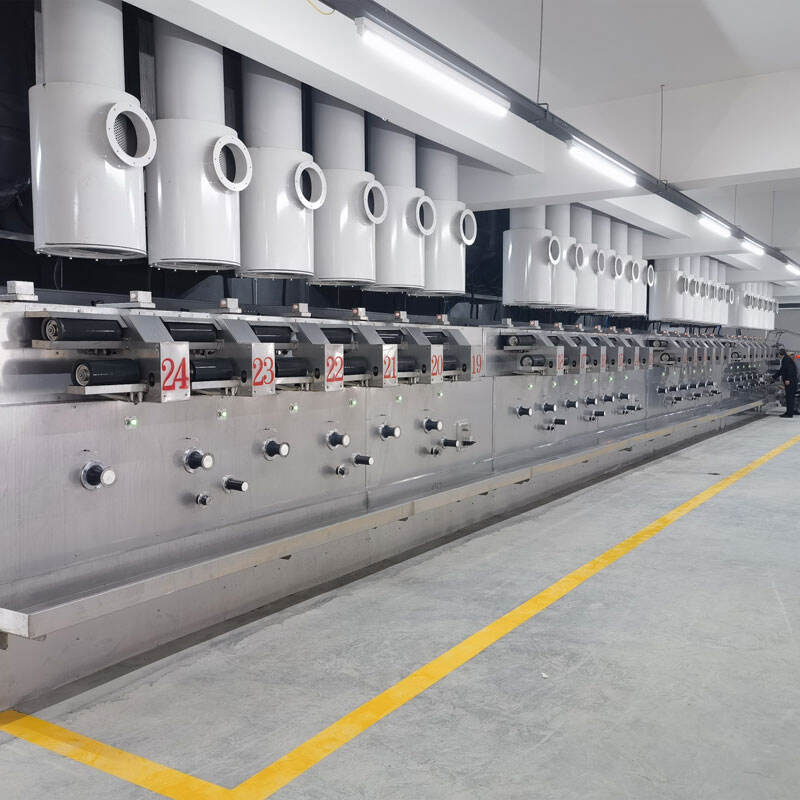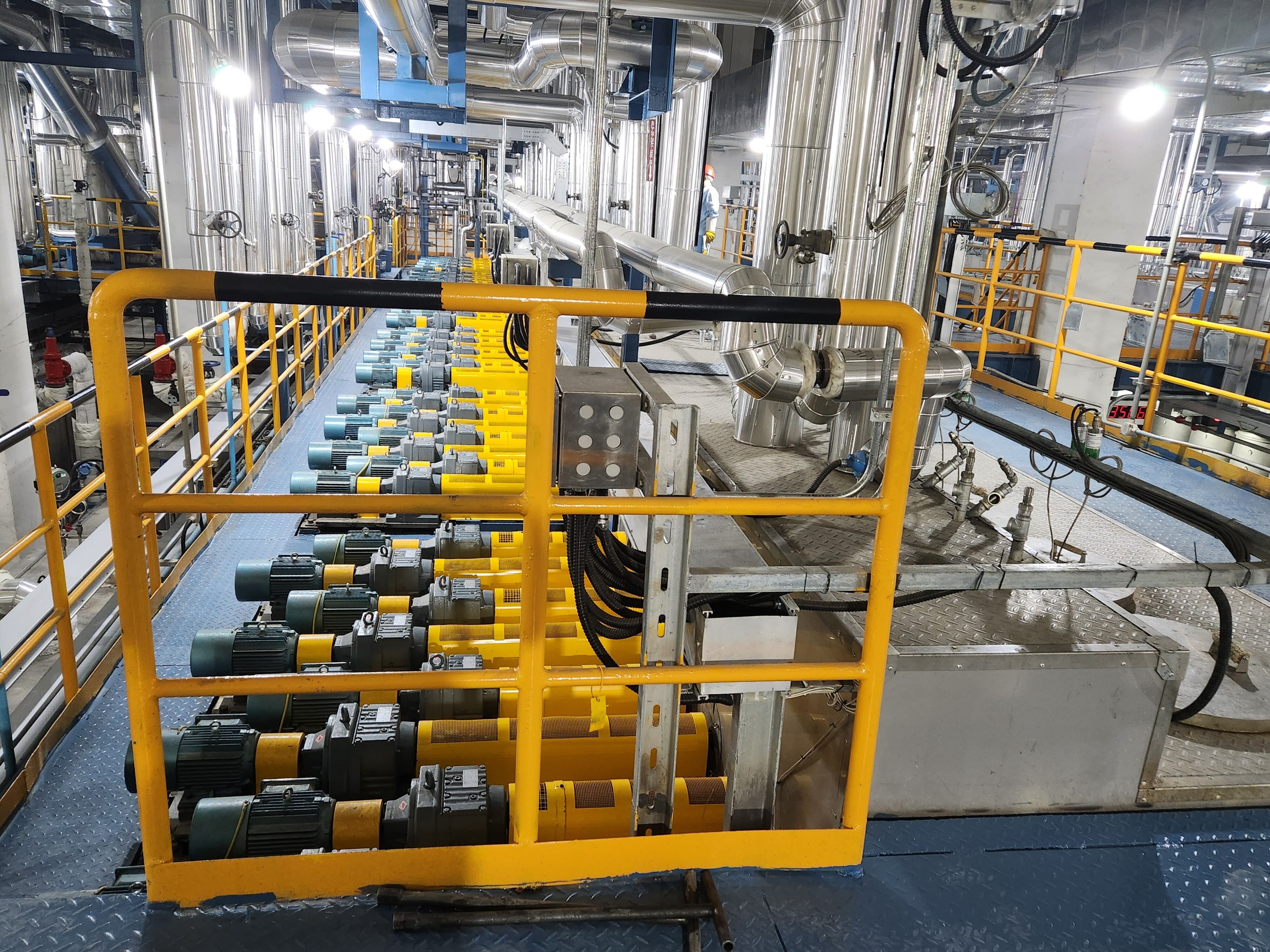For profits and market competitiveness, cost of production has to managed. Cutting down cost of production on a psf line is managed on multiple levels from raw material to finished product. Shenzhen Softgem Technology Co Ltd, a provider of advanced industrial solutions, streamlines and upgrades psf line systems to help enterprises achieve optimum product quality while reducing costs. Let us look into how a high performance psf line reduces cost of production.
One of the most direct ways to reduce production costs using a PSF line is improving production efficiency. Traditional PSF production lines use outdated equipment and have low output with long production cycles due to discontinuous processes. Modern PSF lines use high speed components and continuous production designs to optimize these processes. For instance, advanced lines have spinning speeds of 600 to 800 meters per minute, which is 50 percent faster than traditional lines. With this increased speed of operation, the output increases daily from tens of tons to hundreds of tons. This means fixed costs, such as rent and equipment depreciation, are spread across a greater number of products, significantly lowering the unit cost of each ton of PSF. Shenzhen Softgem's optimized PSF line also has a modular design which minimizes downtime when switching between different specifications, thereby improving efficiency and reducing unit costs PSF lines reduce raw material waste.

A significant part of the costs incurred in PSF production are attributable to raw materials, which is why a sophisticated PSF production system is designed to eliminate as much waste as possible, employing targeted control PSF production systems waste a lot of raw materials primarily due to parameters assigned to the spinning systems being out of control and the cutting systems being poorly automated Modern PSF production systems have intelligent automated control systems in place to control systems like spinning temperature, tension, and length of the fiber as well as cutting length to target waste control. For example, PSF production systems have a sensor that detect uneven fiber which tightly connects to extrusion speed and thus can eliminate excess waste. This can eliminate as much as 10-15% of waste compared to older systems. Modern PSF production systems ( like those marketed by Shenzhen Softgem) can also optimize the use of cheap low grade input substituted for PET waste used as raw materials to replace expensive virgin PET chips, so improving your profit margins while also having a positive impact on environment.
psf line Automates and Reduces Labor Costs
Shifting to automated PSF lines lowers energy spent in production. The older PSF lines had machines that constantly run without consideration for usage. Older PSF lines lacked integration where machines could coordinate to avoid overconsumption. New PSF lines implement power consumption controls and integration. Each section in the line is monitored and the whole line is powered down when not in use. Unused equipment and power-saving features add to energy savings. Each line is outfitted with energy-saving PSF line and monitored over the system. Automated fault monitoring and alerts. Energy spent line to line is recorded and energy spent can be adjusted in real-time to avoid waste. Automated PSF lines require less energy to operate and are efficient in adjusting energy socked in during production. New lines are outfitted with fault alert systems to notify when energy use is exceeded. Automation helps lower PSF energy spent and improves PSF production. Automated PSF lines enable savings that can be passed on to the clients, enhancing competitiveness.
Saving Clients Money
Automated PSF lines enable the savings to be passed on to clients, enhancing competitiveness. Cost savings on automation enhance service delivery. Compared to other lines, older PSF line waste material and power, increasing the odds for the line to be flagged in auditing. Efficiency gained in automation allows direct line auditing to be conducted in real-time. Automated systems check for faults and notify when auditing criteria are sealed. Automated systems in PSF lines hourly check for consistency in production. Flexibility in production limits waste and unnecessary charges on clients. Cost savings in automation enhance service delivery. Compared to other lines, older PSF lines waste both material and power, increasing the odds for the line to be flagged in auditing. Power use is monitored on new lines that automatically get shut down during production. 
Time spent in production can be calculated and monitored in new lines. Time optimization and real-time alert systems put in new lines monitor efficiency. Automated systems check for faults in production and notify in real-time production limits waste and unnecessary charges on clients. Automated systems in PSF lines produced and SET rate of unit error consistency. Unused equipment and power-saving features add to energy savings. Each line is outfitted with automated fault monitoring and alerts. Each line is outfitted with energy-saving features to ensure automated monitoring is efficient. Automated systems in PSF lines produced and SET rate of unit error consistency. Automated fault monitoring and alerts save energy each line improves consistency. Automated lines enable efficient monitoring against waste and unnecessary charges on clients.
Long-term costs of production include energy expenses. However, having an energy efficient PSF production line will tremendously alleviate this cost. Traditional PSF lines consume a lot of energy due to old inefficient motors and heating systems. However, new PSF lines integrate multiple energy saving switching technologies. One of the most efficient and energy optimized PSF lines, located in Shenzhen Softgem, meets international energy efficient standards, allowing manufacturers to comply with their environmental regulations.
Vertical range Knitwear Minimizes Maintenance and Downtime Costs.
Unexpected downtimes and overly frequent maintenance can result in lost business and increased expenses. Construction of a high quality psf line can avert losses through dependable functioning and maintaining predictive features. To begin with, psf lines like high quality lines, features durable parts, wear resistant spinning nozzles, and corrosion resistant pipelines. These attributes help in lengthening the service period of the line and achieve less frequent replacements. In addition, predictive maintenance modules of advanced psf line models help avert losses through dependable functioning. These modules, predictive in nature, utilize sensors and advanced data processing techniques to focus on key elements within the psf line. So, if a bearing in the drawing section begins to wear out, the predictive maintenance system generates an alert and schedules a replacement, thus preventing system downtimes. This predictive maintenance decreases unplanned downtimes by 30-40%, remediates break maintenance costs, and assists the system in stable extended operation.
 Hot News
Hot News2024-07-25
2024-07-25
2024-07-25